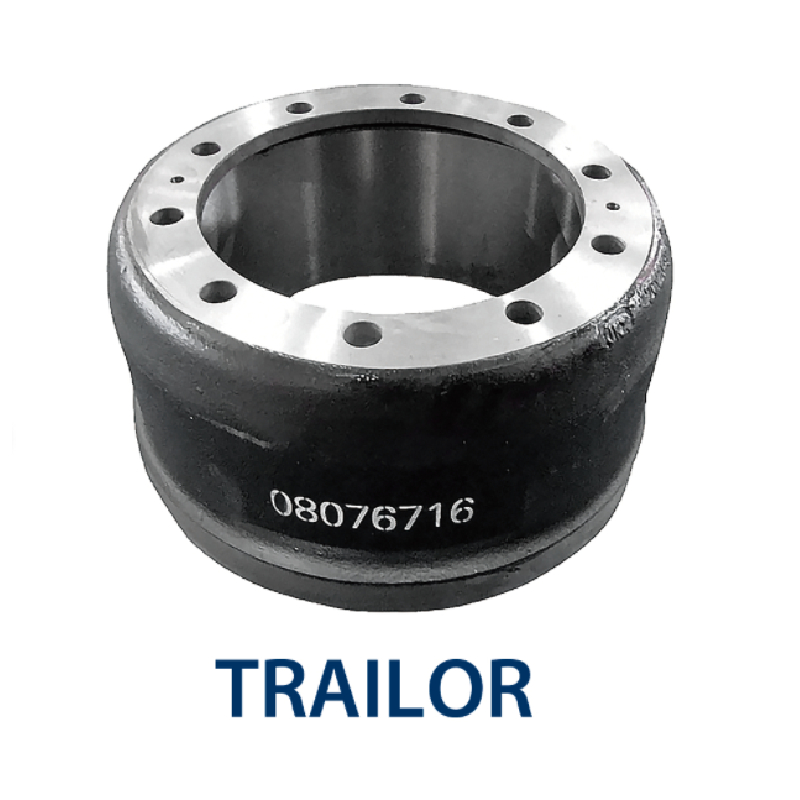Nov . 20, 2024 07:19 Back to list
brake drums vs rotors
Brake Drums vs. Brake Rotors Understanding the Differences and Applications
When it comes to vehicle braking systems, two primary types dominate the landscape brake drums and brake rotors. While both serve the crucial function of slowing down and stopping vehicles, they operate differently and have unique advantages and disadvantages. Understanding the distinctions between these two braking components is essential for vehicle owners, mechanics, and automotive enthusiasts alike.
Brake Drums
Brake drums are typically found in the rear braking systems of many vehicles, particularly older models and some budget-friendly cars. These components consist of a cylindrical drum that rotates along with the wheel. Inside the drum, the brake shoes press outward against the drum's inner surface when the brake pedal is engaged, creating friction and slowing the vehicle down.
One of the significant advantages of brake drums is their ability to generate more braking force at lower speeds. This characteristic makes drum brakes highly efficient for smaller or lighter vehicles. Additionally, brake drums are generally less expensive to produce and replace, making them a cost-effective option for many manufacturers.
However, brake drums come with limitations. They tend to be less effective in dissipating heat compared to their disc counterparts. This inefficiency can lead to brake fade during prolonged use, especially in high-performance situations or on steep gradients. As the temperature increases, the friction material can degrade, reducing braking efficiency.
brake drums vs rotors

Brake Rotors
In contrast, brake rotors are commonly found in modern vehicles, primarily in the front brakes but often in the rear systems as well. A brake rotor is a flat disc that spins with the wheel, and when the brake pedal is pressed, calipers squeeze the brake pads against the rotor's surface, creating the necessary friction to slow down the vehicle.
Brake rotors offer several advantages over drums. They provide better heat dissipation due to their exposed design, reducing the risk of brake fade. This feature makes disc brakes more effective for high-performance cars or vehicles that frequently carry heavy loads. Moreover, the maintenance and inspection process is simpler for rotors, as any wear can be quickly assessed through visible inspection.
However, brake rotors come with drawbacks. They can be more expensive to manufacture, and their replacement costs are typically higher than that of brake drums. Additionally, rotors may wear unevenly and require resurfacing or replacement more frequently, particularly in aggressive driving conditions.
Conclusion
In summary, the choice between brake drums and brake rotors depends on various factors, including vehicle type, intended use, and performance requirements. While brake drums are cost-effective and provide adequate performance for many smaller vehicles, brake rotors offer superior heat management and efficiency, particularly for high-demand applications. Understanding these differences can help drivers make informed decisions regarding their vehicle's braking system, ensuring safer and more reliable operation on the road.
-
Scania Brake Drums: OEM Quality for Optimal Safety & Durability
NewsAug.16,2025
-
R.V.I: Advanced Remote Visual Inspection for Precision
NewsAug.15,2025
-
Discover HYUNDA: Innovative Vehicles, Equipment & Solutions
NewsAug.14,2025
-
R.V.I: Unlock Advanced Insights & Real-time Performance
NewsAug.13,2025
-
Kamaz Brake Drum: Durable & Reliable for Heavy Duty Trucks
NewsAug.12,2025
-
Heavy Duty Iveco Brake Drum - Premium Quality & Safety
NewsAug.11,2025
